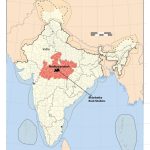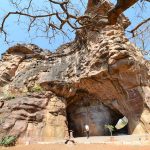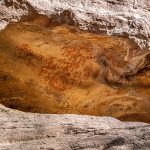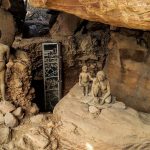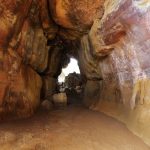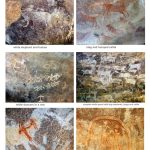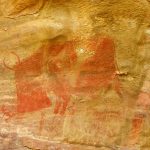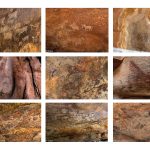The rock shelters known as Bhimbetka are caves featuring prehistoric paintings that provide evidence of human settlement and cultural evolution spanning between the Paleolithic and Mesolithic periods. The rock shelters have been designated as a world heritage site with cultural significance. Located 45 kilometers from the south-east of Bhopal in the Raisen district of Madhya Pradesh, India, the archealogical site consists of seven hills with over 750 rock shelters that spread over 10 kilometers, proving the existence of inhabitants at least 100,000 years ago. In correspondence with the Indian Mesolithic Age, the caves are featured with paintings that are about 10,000 years old (c. 8,000 BCE), which how the themes of animals, warriors on horseback, dance, and hunting from the stone age. The shelters depict the oldest rock art in India. Researchers discovered the Precambrian fossil, millions of years before the human era, with the enigmatic basal animal Dicinsonia, the earliest known living animal, on the roof of the Bhimbetka rock shelters.
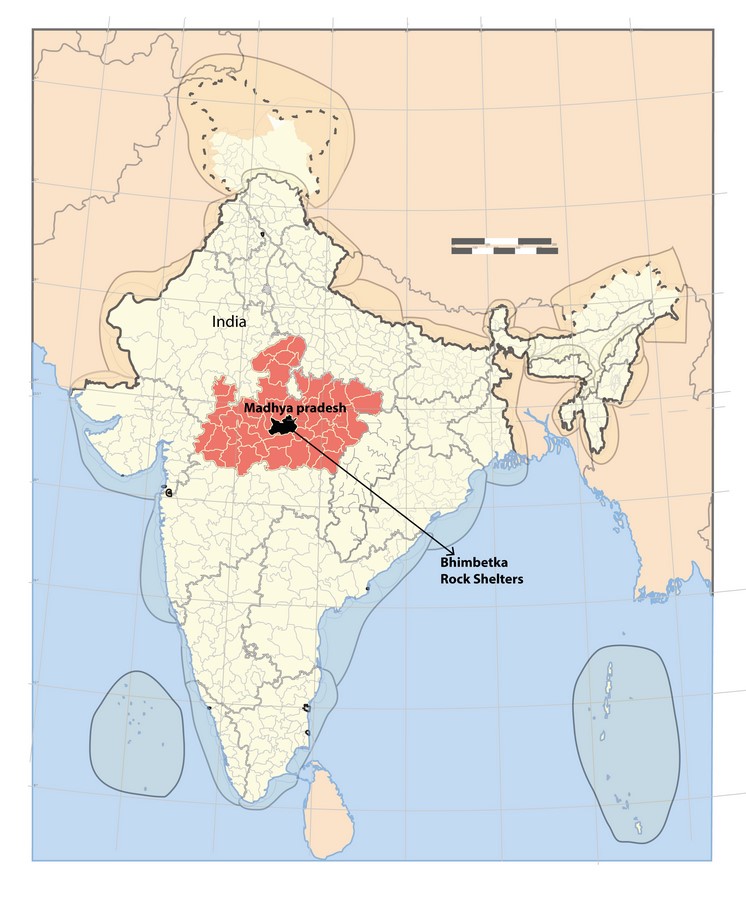
History | Bhimbetka Rock Shelters
A gallery of thousand-year-old enormous red bison paintings is hidden among Bhimbetka’s black boulders. The legend describes that this name is derived from a great hero of the Hindu epic Mahabharata. The names Bhim and Bet-ka mean “the sitting place of Bheema.” Kincaid, a British official, first mentioned the caves in his scholarly paper in 1888, based on information he gathered from local Adivasis tribal people in the Bhojpur Lake, and he referred to Bhimbetka as a Buddhist site. Later, in 1957, an archaeologist named V.S. Wakankar discovered the caves’ prehistoric significance and the rock formations, which he found similar to those he had seen in France and Spain. By 1970, all 750 shelters were identified, and only a few were allowed to be visited by tourists. Of the 750 shelters, 500 of them are adorned with paintings. Archaeologists discovered evidence of the earliest human settlements in caves where human lives existed 1000 centuries ago on the Indian subcontinent. These ancient rock shelters are assumed to be the place where the Asian Stone Age began. The paintings are believed to be 300 centuries old. The site has the oldest stone walls and floors, and the raw materials used in monoliths were identified as Barkheda. The 1892-hectare site is protected under Indian laws and was declared a world heritage site by UNESCO in 2003. The structure spans seven hills known as Bhonrawli, Bhimbetka, Lakha Juar, Hondra, and Muni Babaki Pahari under the wildlife sanctuary of Ratapani.
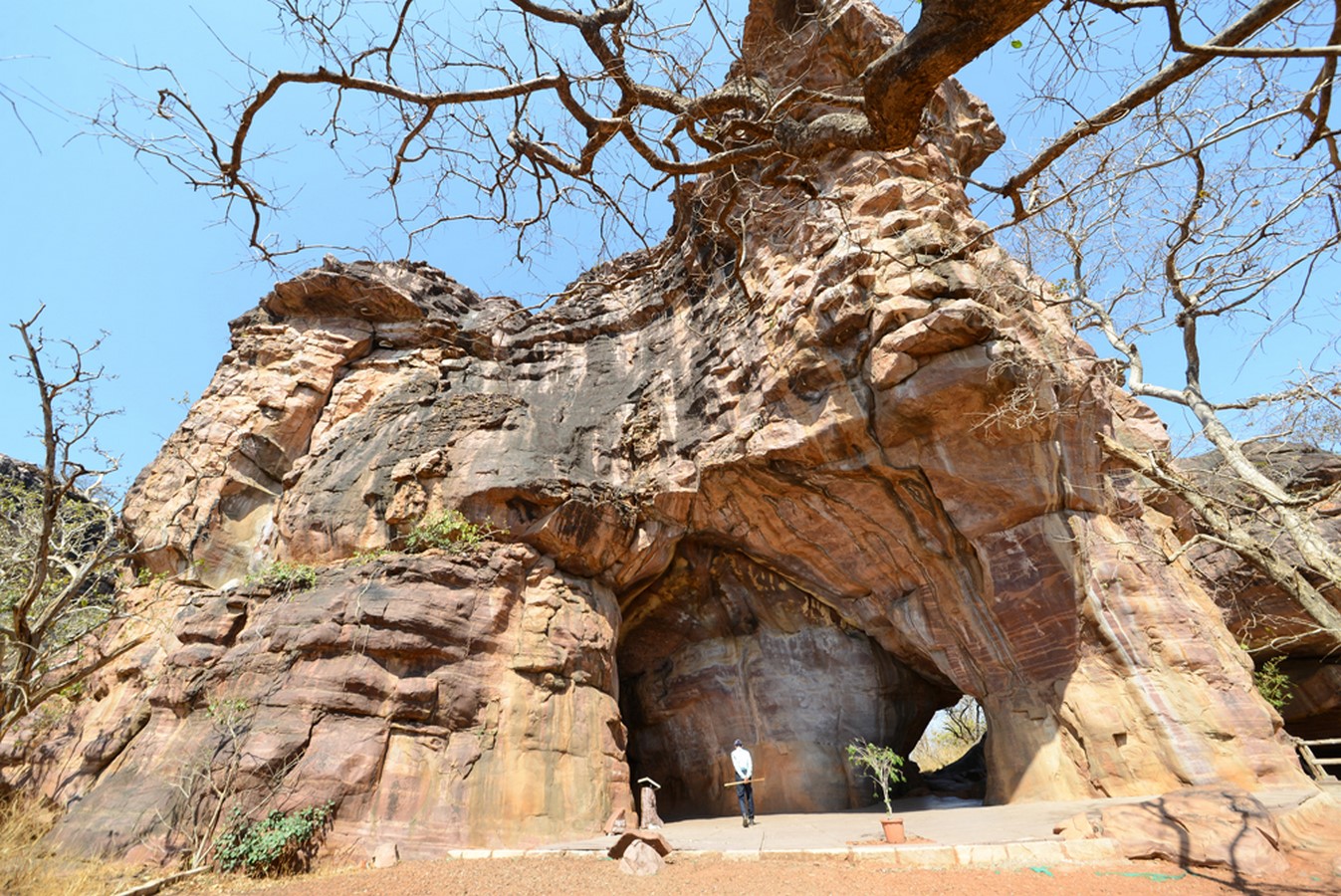
Architectural Significance
The archaeological treasure of ancient paintings with more than 600 rock shelters that emerge naturally, notifying nature as a great architect, belongs to the Neolithic age where early human settlement began. It also signifies the religious importance of the place, and the paintings discovered on the rocky terrain of the Vindhyan range prove that the same rocks have been used by different people at different times. On this basis, the paintings can be classified into seven major periods known as the Upper Palaeolithic, Mesolithic, Chalcolithic, Early Historic, and Medieval. The cave paintings range from motifs to geometric shapes, with colour pigments made from natural vegetable dyes, primarily red and white with a little blue and the use of green and yellow, which remained safe inside caves because they were afraid of the sun and rain.
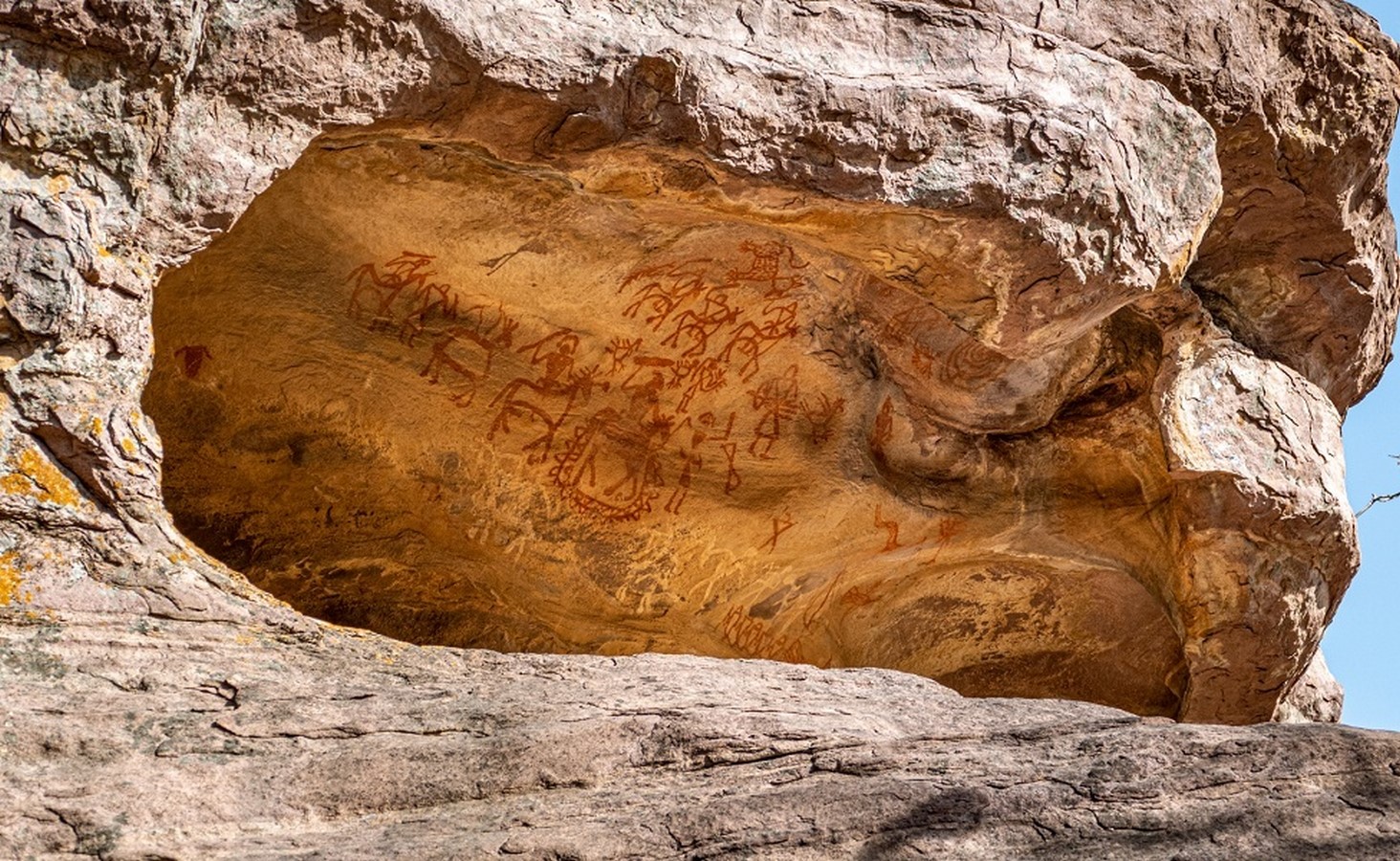
The paintings show the daily household scenes, hunting activities, dancing, animal fighting, elephant riders, honey collections, body tattooing, music etc as if the ancient humans left their symbol of existence on the rocks and the generations to know the life style, the evolution, culture, beliefs and to the type of animals lived once or existed during the era. Caves are named after the painting stories like some caves depict different animals such as bison’s, tigers, crocodiles, dogs and antelope so the cave is named as Zoo cave and other smaller caves have buddha depictions. The art of the paintings illustrate the time when man and nature were far more in harmaony with each other these paintings are mostly found in remote and rugged terrain. The oldest painting in the Bhimbetka cave is more than 12,000 years old. They also resemble like the one discovered in Kakadu National Park in Australia and to the paintings of Bushmen in Kalahari Desert and upper paleolithic Lascaux cave paintings in France.
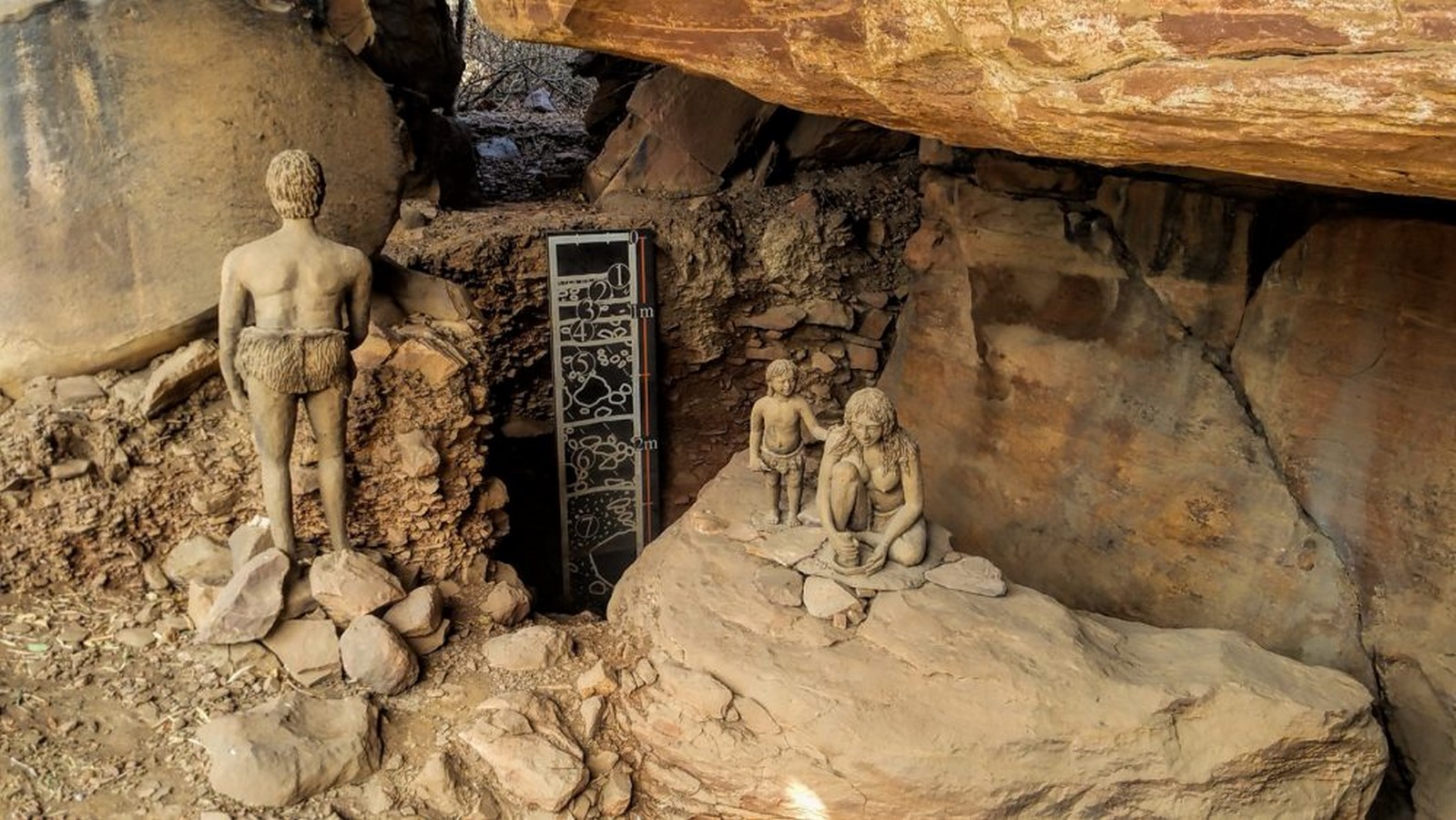
Auditorium Cave
The Auditorium cave, surrounded by quartzite towers, is one of the significant features of the site, visible from several kilometers away. According to archaeologists, it is the largest shelter at Bhimbetka and has a cathedral-like atmosphere with its gothic arches and spaces that soar. At the entrance of the cave, a large boulder known as King’s Rock exists, which sits as the central feature of the Bhimbetka and other shelters spread. The plan of the cave is in a right-angled cross shape with four branches pointing in four cardinal directions. The main entrance is toward the east, which leads the eastern passage to the boulder where no evidence of any ritual is found.
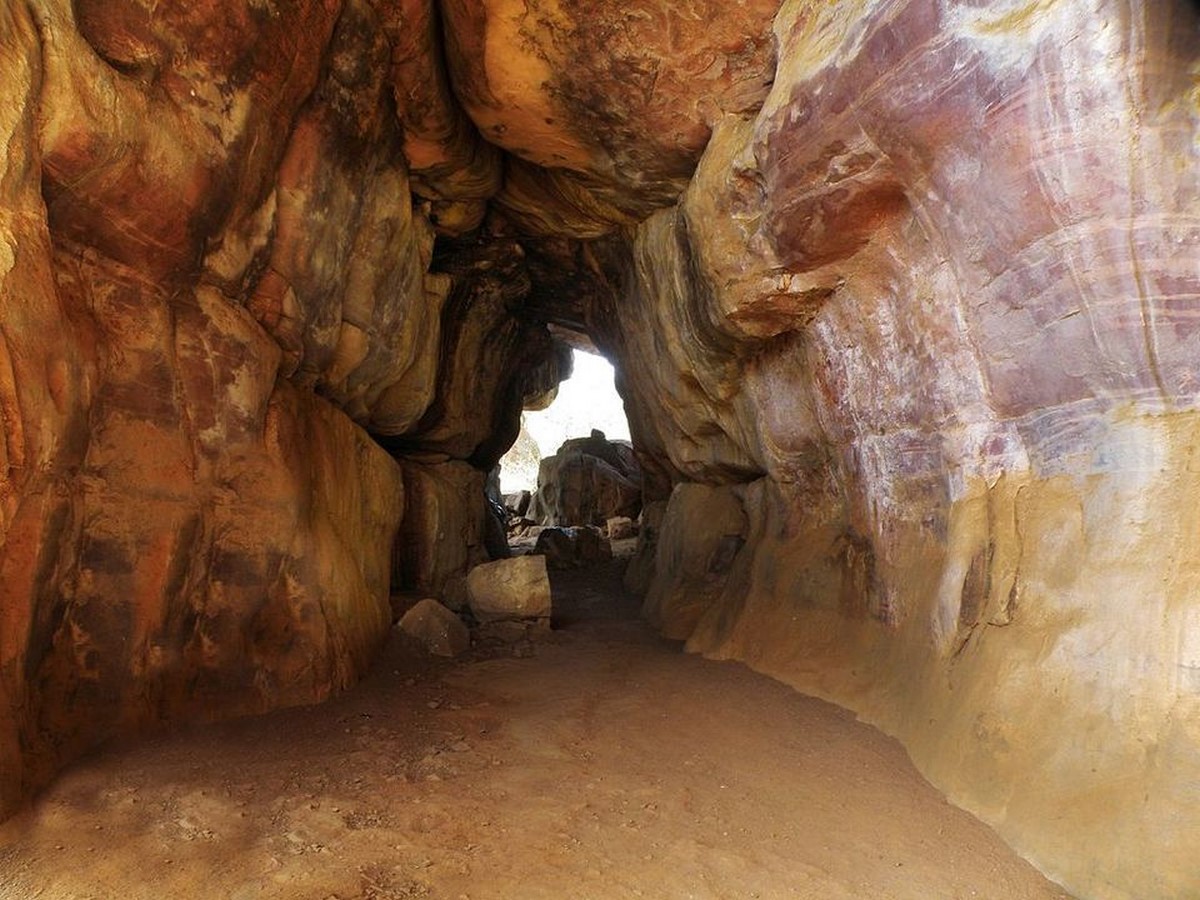
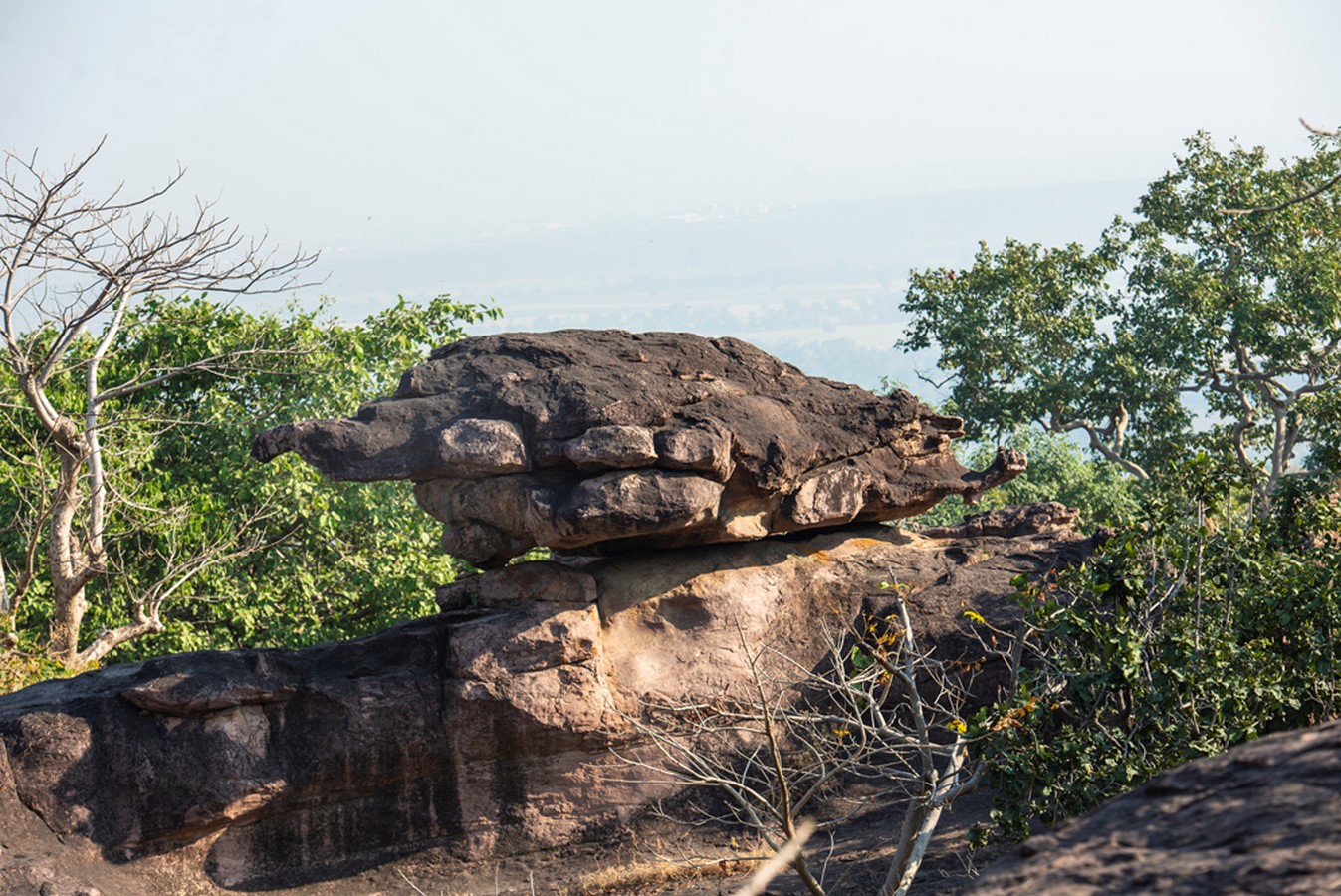
Rock Art Paintings | Bhimbetka Rock Shelters
The paintings of Bhimbetka are found to be 10,000 years old, but most of the geometric figures date to the medieval period. The drawings are made deep inside the niches or inner walls, which endure the vegetable colours used in paintings. They are classified into seven periods. The paintings of humans dancing and hunting depict the period of the Upper Palaeolithic’s age. Mesolithic drawings represent linear decorations on the body, human figures, and hunting scenes. There are clear pictures of weapons used, some depictions of communal dances, drinking, and burials, and musical instruments appear in rhythmic movement. Chalcolithic drawings are similar to Mesolithic drawings, with some agriculture and trade with the Malwa Plains added. The pre-historic period depicts the paintings of religious symbols and scripts and figures of gods represented by Yakshas. They mainly used white, yellow, and red colours with a schematic and decorative style. The medieval period’s paintings are more geometric and linear in a schematic way, representing crudeness and degeneration in their artistic style. The cave dwellers used red hematite and charcoal with manganese oxides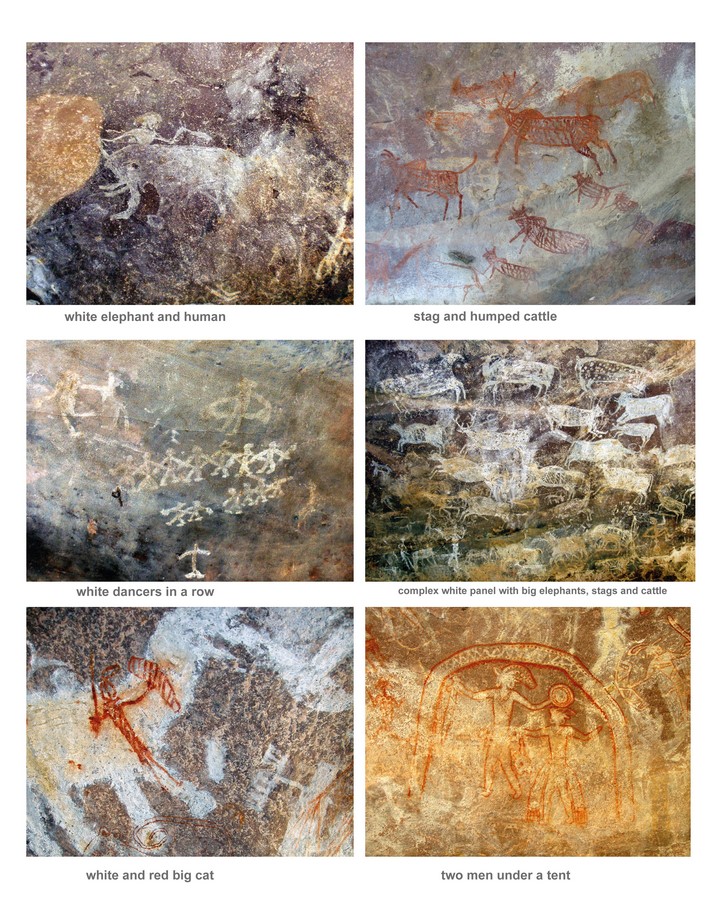
Animal and human art depiction_©https://letusdiscoverindia.com/stick-figures-to-tribal-war-cave-art-in-bhimbetka/The Zoo Rock Cave is popular for paintings of animals such as deer, elephants, bison, peacocks, and elephants with tusks. There are paintings that represent the hunting style and also people fighting with weapons like arrows, swords, and shields. Some horsemen are seen riding chariots, and in one painting a large wild bovine is seen. There are two groups of paintings: one depicts food gathering hunting, and the other depicts battles between rulers wielding swords, bows, and arrows. It is painted to leave their symbol of existence to pass on for the generations: the culture, the human settlement and evolution era, and the type of animals that existed. An experience of learning their culture is shown, as is a way of communicating that proves that humans existed centuries ago, both historically and spiritually. This marks the attractions for visitors and the importance of the place and is considered part of the world’s heritage.
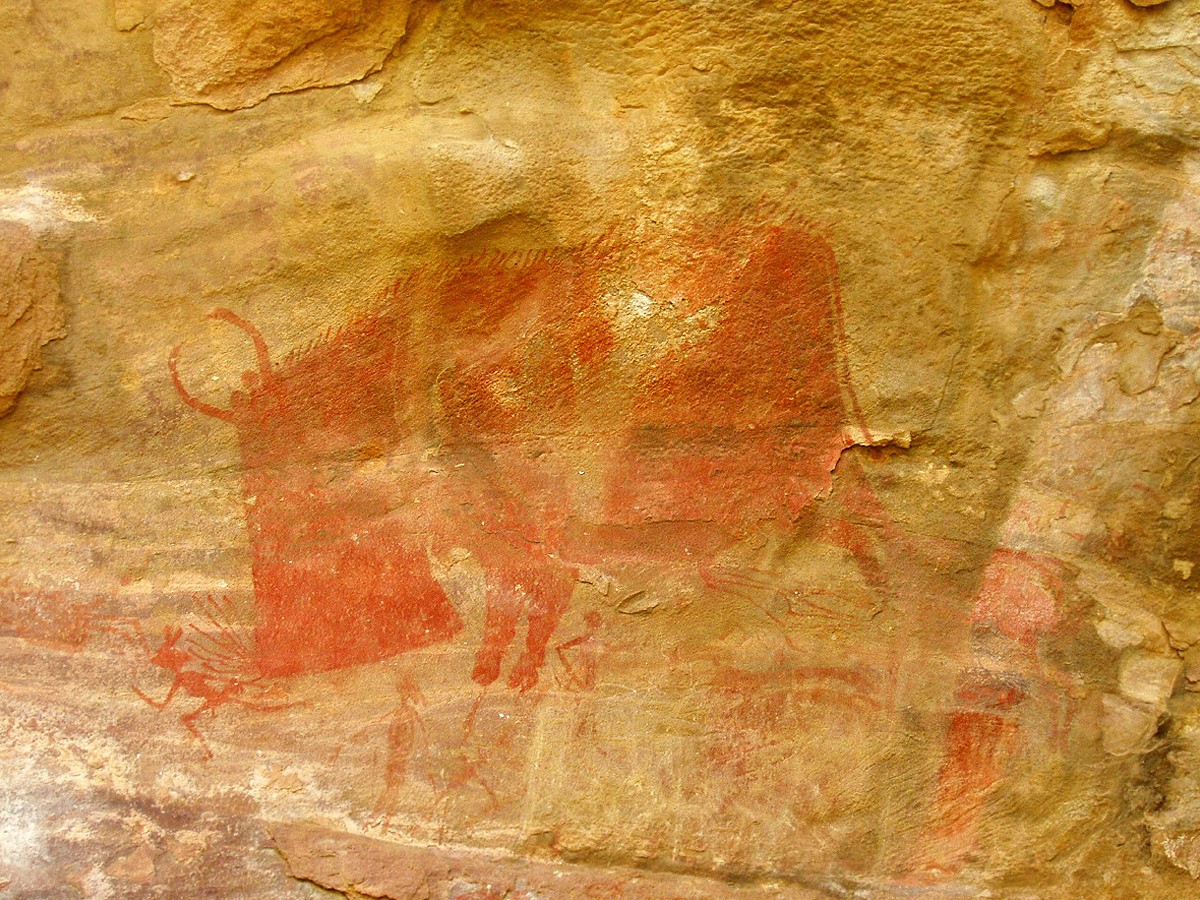
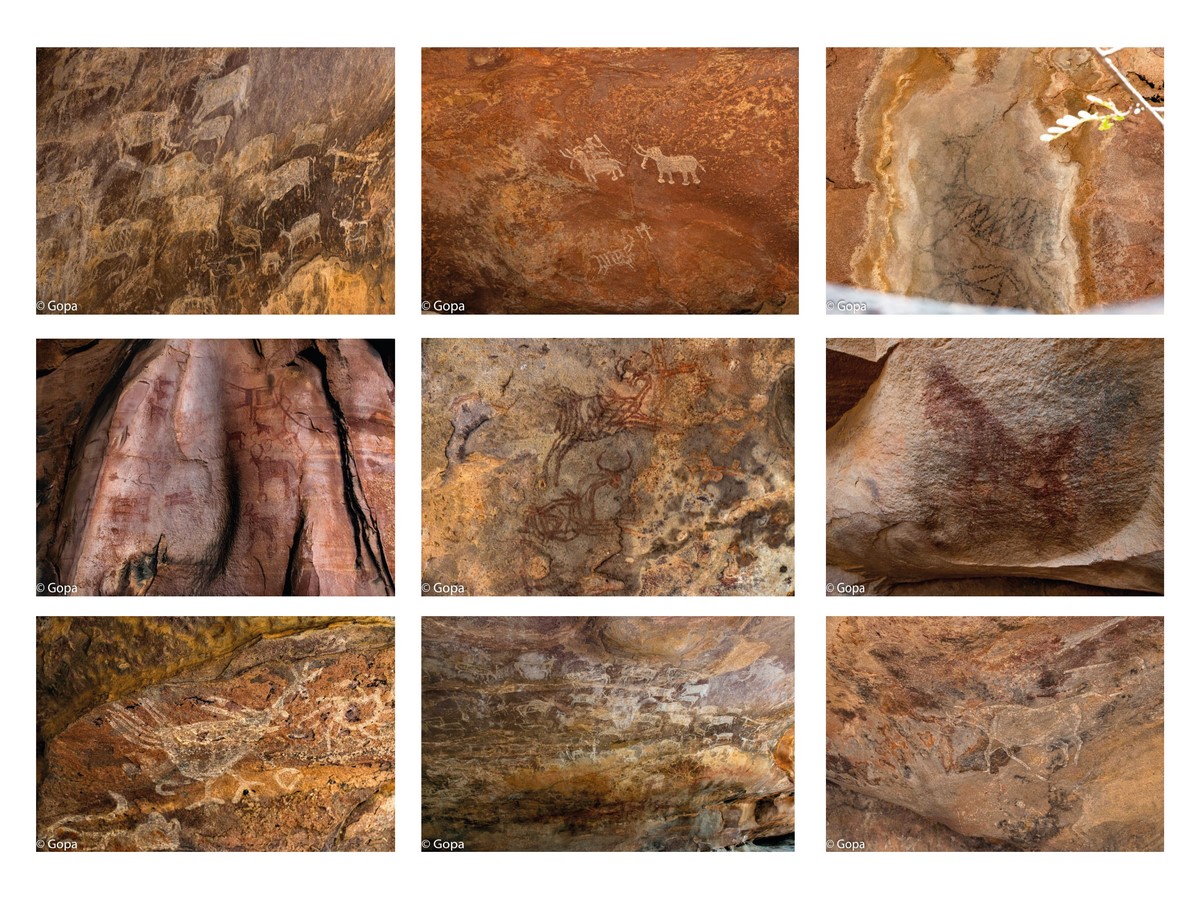
The natural structure holding exclusive importance of history, art and culture of a community that has global value. Bhimbetka caves being the oldest caves has also recorded a history of human evolution that existed 700,000 years before the living proof of earliest human inhabitation in the Indian sub-continent with prehistoric life and painting as a form communication and expression. The settlement of Home erectus species more than one million years ago has been validated in these rock shelters that marks significance in the history of Indian civilisation. The experience of walking through these ancient naturally carved rocks surrounded by dense forest of Bhimbetka is being alive like a child wonder in every visitor.
References:
Britannica, The Editors of Encyclopaedia. (2022) “World Heritage site”, Encyclopedia Britannica, Available at :https://www.britannica.com/topic/World-Heritage-site.
Ecoindia. (2021) Bhimbetka caves. Available at: http://www.ecoindia.com/caves/bhimbetka.html
Martin. (2018) Bhimbetka Rock Shelters.Available at: http://www.wildlifephotographyindia.com/bhimbetka-rock-shelters/
Kamal. (2018) Travel guide to Bhimbetka shelters.Available at:https://exploremyways.com/bhimbetka-rock-shelters-travel-guide/
Destinations,Bhimbetka. (2020) The legend behind Bhimbetka’s name Available at:https://www.mptourism.com/the-legend-behind-bhimbetkas-name.html








